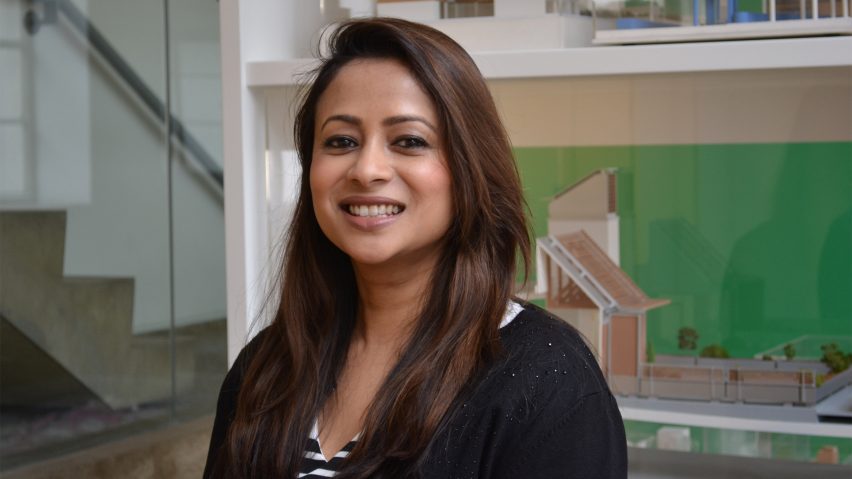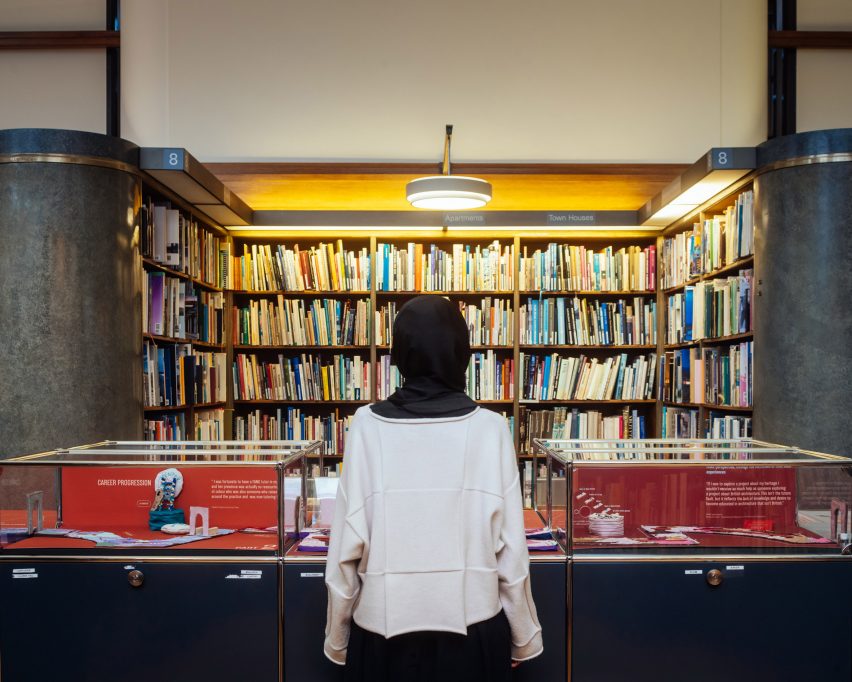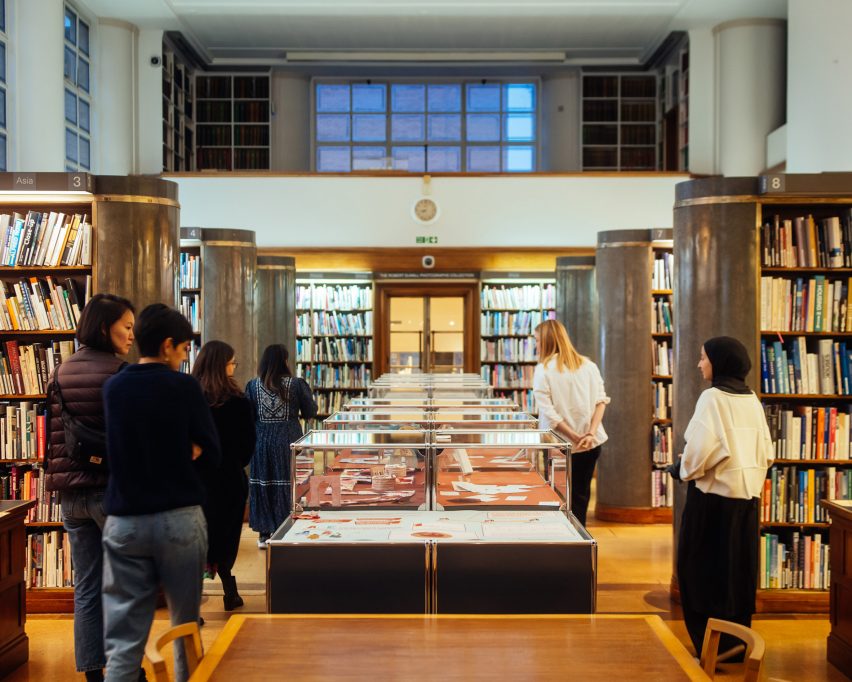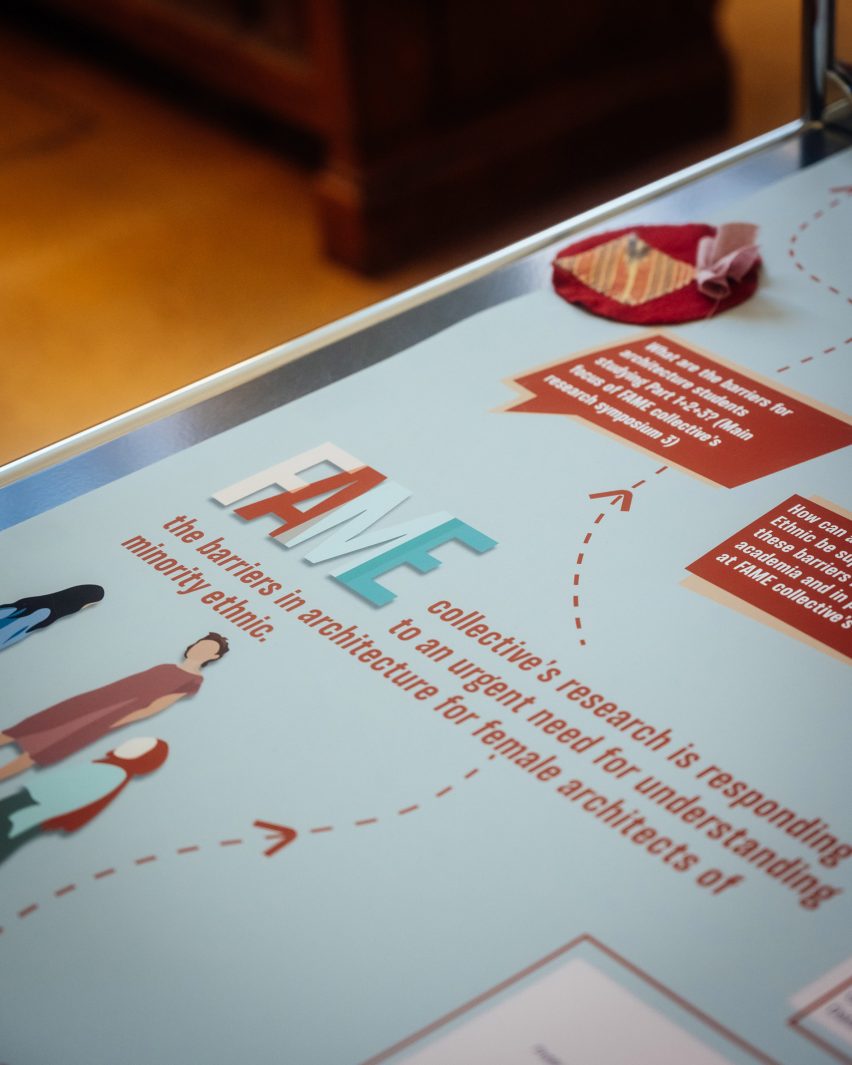
"Those in power want to hold on to their one way of designing" says Tumpa Husna-Yasmin Fellows
People of colour and women working as architects are often actively discouraged from following their design instincts, FAME Collective founder Tumpa Husna-Yasmin Fellows tells Dezeen in this interview.
Fellows, an educator at London's Central Saint Martins university and co-founder of Our Building Design, argued that some architects in senior positions limit design responsibility to themselves and undervalue the skills of people from diverse backgrounds.
"It's very much about ego and who represents the design or the brand," Fellows said. "Women are usually not given that experience or responsibility and even if they are, they're not given the right kind of recognition."
"It's really good for business to have a diversity of skills and talents, otherwise you just get one kind of design. That's where architects can have conflicting opinions because those in power want to hold on to their one way of designing."

Fellows is the founder of architecture community organisation Female Architects of Minority Ethnic (FAME) Collective. The group recently launched an exhibition that aims to present the experiences of minority ethnic women in architecture academia and professional practice.
Hosted in the library of the Royal Institute of British Architects' (RIBA) London headquarters, the exhibition draws upon lived experiences and data collected by FAME Collective as part of a research project titled "Exposing the barriers in architecture from a FAME perspective".
The RIBA-funded research aimed to highlight the adversities faced by minority ethnic women in architecture and hold institutions accountable.
Fellows explained that there are "barriers" people face along the path to becoming an architect in the UK that are common to many, but have a greater impact on women and minorities.
As part of the FAME Collective research, multiple minority-ethnic women came forward to say they are withheld from designing in practice, according to Fellows.
"We've heard from women who are really established practitioners in big practices talking about this idea of who gets to design, because it's very much dominated by people at the top and they're usually men," she explained. "The act of designing is a privilege and power that is political in the context of architecture."
"Even if some women are allowed to design, they're not allowed to have the recognition because the design is taken and presented by a male director."
"If they design with lots of colours, or design representing their cultural heritage, they are told that that isn't the way architects should be or the language is not acceptable," Fellows said.
She believes this is detrimental to architecture studios and that they should embrace the wide range of design talents and styles that come from employing people from diverse backgrounds.
"We're not celebrating the diversity of the skills within the practice of architecture," she said.

Fellows believes this discouragement is also present in architecture education, as multiple minority-ethnic architecture students came forward to say they were advised against incorporating parts of their heritage in their projects.
She claimed that students often lack academic support to engage in topics related to their cultural heritage.
"One of the barriers that we keep hearing about is architecture education needing to be decolonised, transformed or expanded, and there should be alternatives to the way it's been taught," said Fellows.
"For example, some of our participants have described that when they tried to do a design project that was responding to their cultural heritage or a discourse they're interested in that reflects their identity, they were discouraged or the tutors and academic staff were not knowledgeable or interested enough to support them with it."
FAME Collective's research found that the number of Black and Asian students falls between each qualification stage, with white men forming the large majority of registered architects.
"One of the most striking data we found was that between Part One and Two, and Two and Three, Black and Asian students completely drop out in huge numbers," said Fellows.
"For Part Three, we looked at the registered architects – 83 per cent are white and 71 per cent are men, so it's very much dominated by white men."
FAME Collective contributed to the Architects Registration Board (ARB)'s plans to introduce an alternate route to the current three-part structure to becoming an architect, aiming to minimise the financial burden on students.
It would involve scrapping the current requirement of an ARB-accredited bachelor's degree (Part One) and permitting students with relevant degrees or professional experience to continue on the path to becoming registered architects in the UK.
Fellows believes this more flexible structure, which the ARB plans to fully carry out by September 2027, will help diversify the profession and allow people to earn in practice while completing their training.
"The work that we've done with the ARB has informed the recent policy change of how to become an architect," said Fellows.
"It reduces the financial burden for some students because that is also another huge barrier for people we spoke to – it's not just gender and race, it's also class and your financial situation."
Fellows argued that while institutional discrimination towards ethnic minority women is experienced across many professions, architecture has a particularly strong culture of white men being respected as figureheads over people from different backgrounds.
"As a society, we've gone a bit backwards," she said. "We still respect and celebrate the white man figure as the architect."
"It's a societal change as well as an attitude and cultural change that is needed for things to happen."
In order to enact change in the industry, people in leading positions in architecture firms should attend diversity events and learn from those affected by discrimination, said Fellows.

She suggested that institutions like the RIBA could do more to ensure equality and diversity in architecture.
"RIBA would be an excellent organisation to enforce at least one managerial member of a practice to attend this type of event at least once a year and pledge to come back to tell us what changes you have made to remove the barriers for underrepresented architects," said Fellows.
"There's lots of ways RIBA could help with this and I guess they are trying to, but I don't think the right people are in the room to engage in the conversations."
"There should be an exchange and a dialogue between people who are being affected and people who are able to make changes," she added.
While she emphasised that FAME Collective's work needs to reach people in power in order to have a significant impact on the architecture profession, Fellows also hopes the group's exhibition is a space where minority ethnic women feel welcomed and represented.
FAME Collective plans to tour the exhibition and is seeking venues outside of London to reach as many people as possible.
"Although we finished our research project formally, our work unfortunately keeps going on," said Fellows. "We have to continue until things change."
"[The exhibition] is about encouraging a diverse group of women, people like myself, and making a welcoming space where they can see themselves represented in the work and also see some of their barriers being amplified and heard in a platform such as the RIBA."
"We want to raise awareness of the situation that we are still facing in architecture, of the lack of diversity and absence of women and people of colour."
The photography is by Sarah Daoudi and Jim Stephenson unless otherwise stated.
Dezeen In Depth
If you enjoy reading Dezeen's interviews, opinions and features, subscribe to Dezeen In Depth. Sent on the last Friday of each month, this newsletter provides a single place to read about the design and architecture stories behind the headlines.